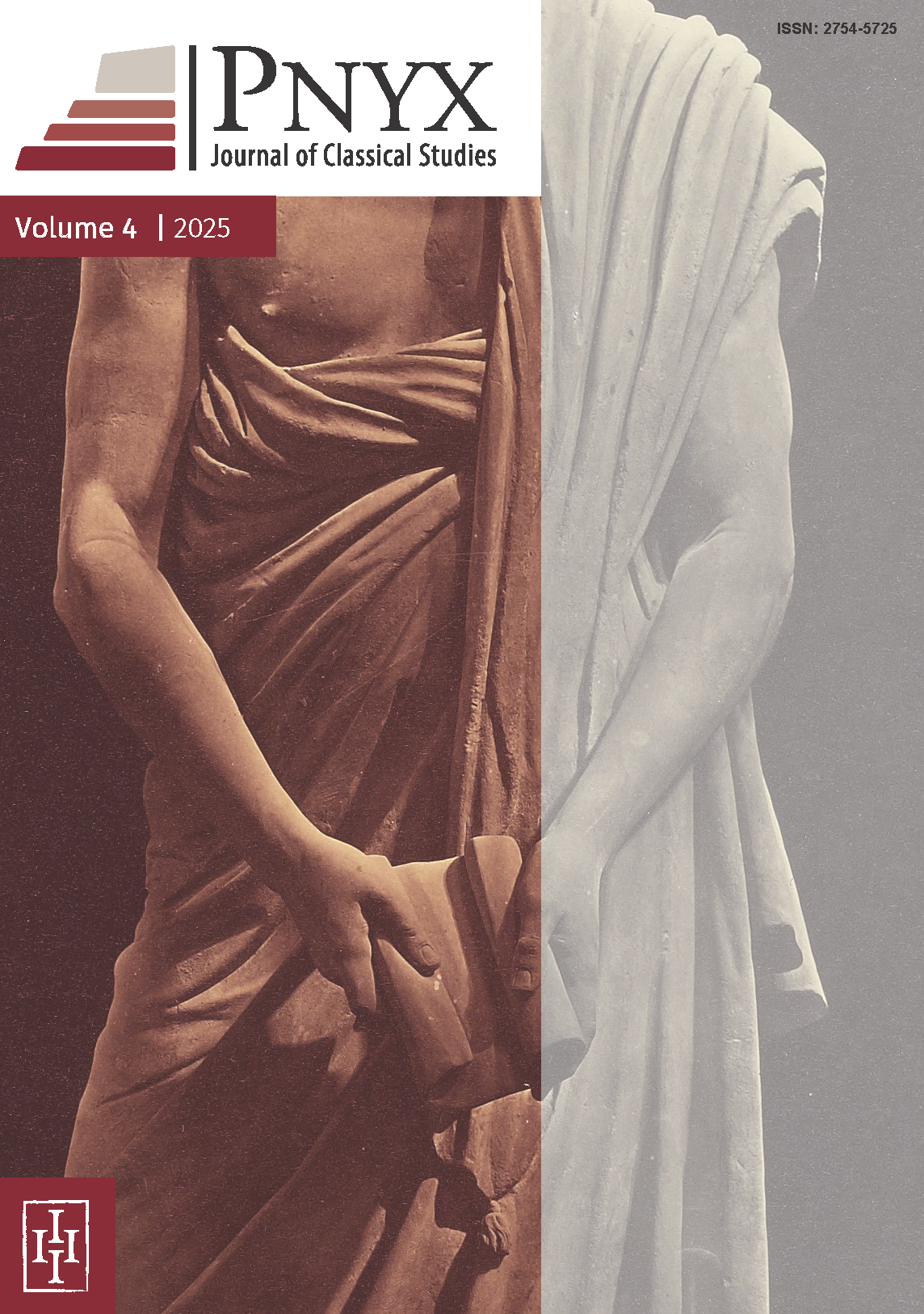The Solonian Council of 400 and the Anarchies in Post-Solonian Athens
Abstract
This paper analyses the composition of Solon’s Council of 400, its relationship with the four tribes, its role in the election of the archons and the periodicity of this body in relation above all to the periodic crises (anarchies) that occurred after the Solonian legislation until Damasias (594–582 BCE). Just as these anarchies took place “every four” years, so too did the penteteric or megala Panathenaia begin to be held “every four years” a little later (566 BCE). I suggest that this periodicity may have been related, in some way, to the quadrennial election of the Solonian Council in the month of Hekatombaion.
##plugins.themes.ekt-hometheme.article.details##
- Come citare
-
Valdés Guía, M. (2025). The Solonian Council of 400 and the Anarchies in Post-Solonian Athens. Pnyx: Journal of Classical Studies, 4, FR1000. https://doi.org/10.55760/pnyx.2025.41138
- Sezione
- Articles

TQuesto lavoro è fornito con la licenza Creative Commons Attribuzione 4.0 Internazionale.
Isegoria believes in the dissemination of research without restrictions. That is why we publish Open Access, digital works under the Creative Commons Attribution licence (CC BY 4.0), following the Berlin Declaration on Open Access to Knowledge in the Sciences and Humanities and the latest developments according to the Plan S (Coalition-S).
This licence allows anyone, including the author, to share, copy, distribute, transmit, adapt, and make commercial use of the work without needing additional permission, provided appropriate attribution is made to the original author or source. Thus, all works published by Isegoria exceed all funder or institutional requirements for research to be published Open Access. Naturally, in case there is a need for a different CC BY licence (i.e. BY-ND/BY-NC-ND) due to third-party permissions, we are happy to discuss and review on a case-by-case basis.
The published Open Access books are discoverable via the Directory of Open Access Books (DOAB) and can be catalogued without restrictions to institutional repositories, academic research networks, personal websites, and be circulated freely on the web.






